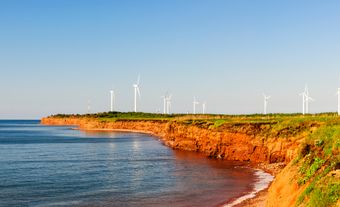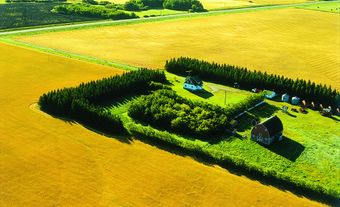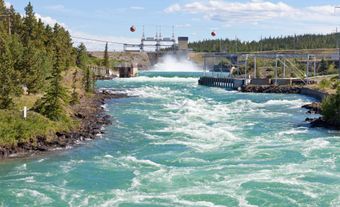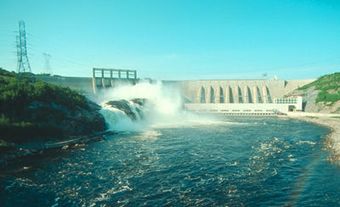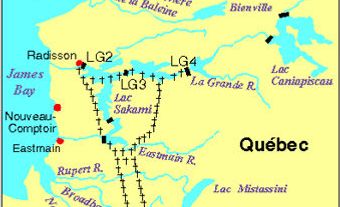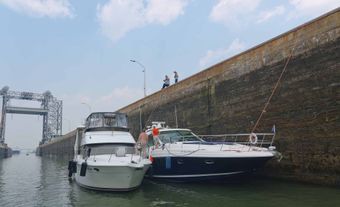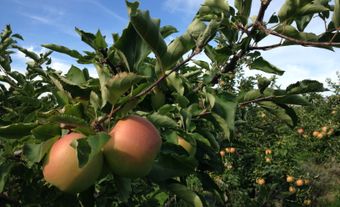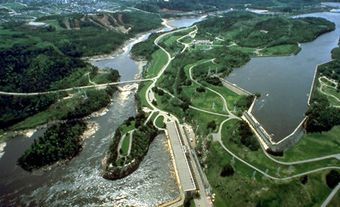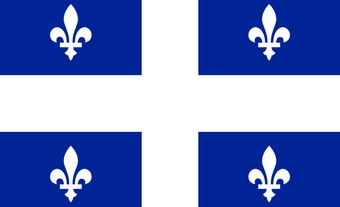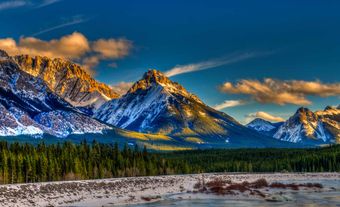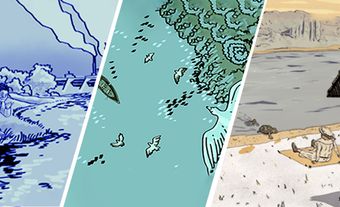Most of Quebec lies on the Canadian Shield, where there are many rich renewable resources. Quebec’s natural resources include forests, water, minerals, agricultural land, rivers, lakes, fish and wildlife. These natural resources contribute towards the economy of Quebec.
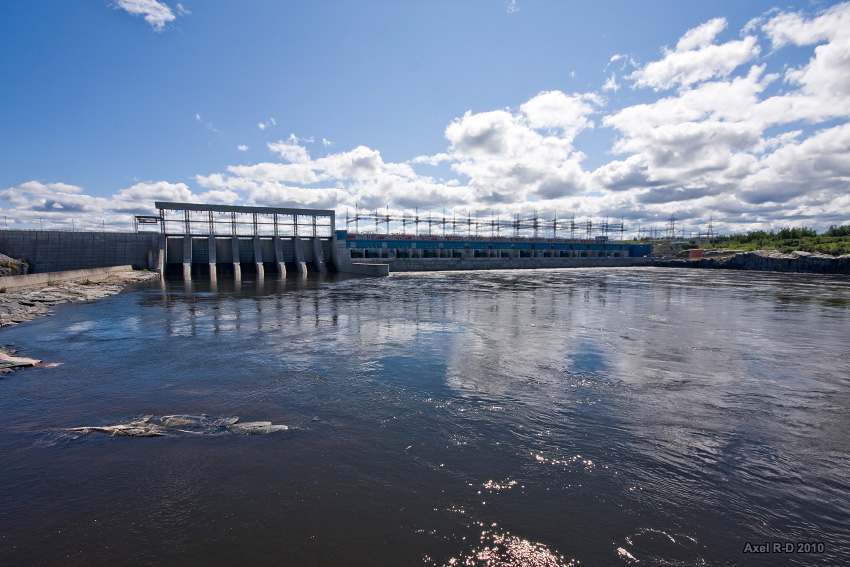
Types of Natural Resources
Water is an important natural resource in Quebec. Rivers that run off the Canadian Shield into the St. Lawrence Lowlands and James Bay are a large source of hydroelectric power in Quebec. Quebec is the largest producer of hydroelectricity in Canada. In 2019, hydropower accounted for 94 per cent of the province’s electricity. Quebec’s dams help make up for its lack of fossil fuel resources (see Hydro-Québec).
Did you know?
When the James Bay Project was initiated in 1971, the Cree and Inuit inhabiting the area where not consulted. The project was contested and in 1975 the James Bay and Northern Quebec Agreement (JBNQA) was signed. The JBNQA allowed the Quebec government to complete the hydroelectric project. The agreement also recognized the hunting and fishing rights of the Cree and Inuit and provided $225 million in compensation. (See also Treaties with Indigenous Peoples in Canada.)
In addition to their importance as wildlife habitat, Quebec’s many freshwater lakes and rivers offer recreational opportunities. The St. Lawrence River is a key transportation route.
Quebec’s capacity to generate power from wind energy is second only to Ontario. In 2019, wind accounted for 5 per cent of the electricity generated in the province.
Good-quality agricultural soils are limited to the southern portion of the province near the St. Lawrence and the Ottawa River. In 2021, the forest sector accounted for $5.9 billion of Quebec’s gross domestic product.
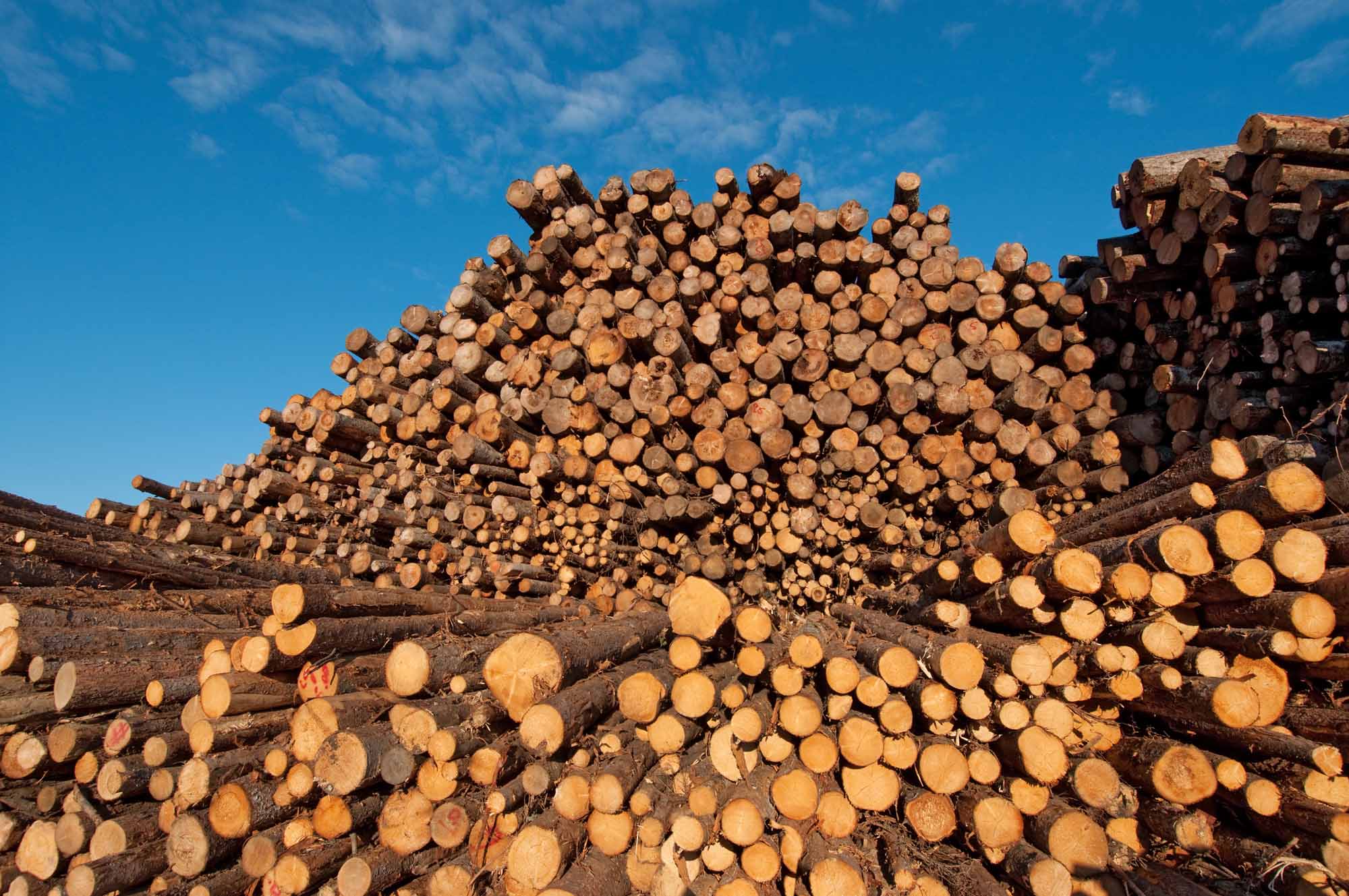
Important mineral resources in Quebec include iron, gold and some base metals. In 2021, the value of mineral production in Quebec was approximately $11.9 billion.

 Share on Facebook
Share on Facebook Share on X
Share on X Share by Email
Share by Email Share on Google Classroom
Share on Google Classroom
